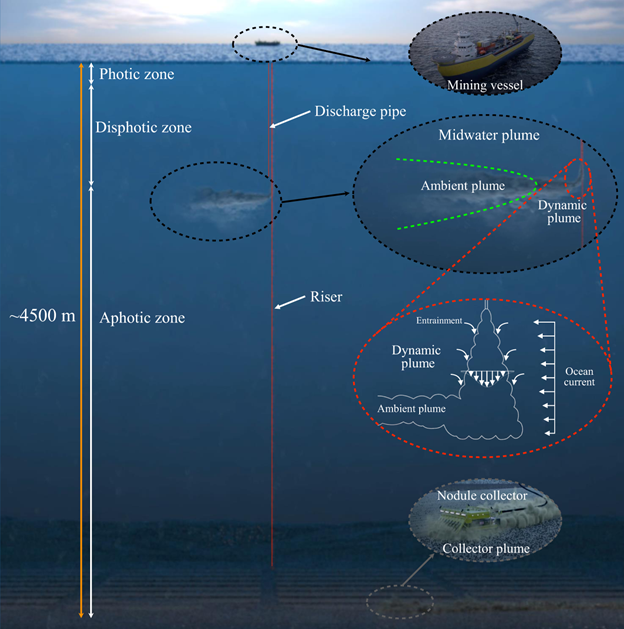
IMDC’s numerical modelling team had the chance to contribute to a paper published in Nature Communications, in a collaboration with a.o. Massachusetts Institute of Technology, Scripps Institution of Oceanography and University of California. The topic of the paper is the dispersion of deep sea mining sediment plumes.
IMDC’s involvement consisted in the large scale modelling of the dispersion of sediment plumes arising from deep sea mining. Thereto, IMDC developed a two-way coupling between a Lagrangian near field model and a TELEMAC-3D ocean model. The model was used to calculate the far-field spreading of the plume in the Clarion-Clipperton zone in the Pacific Ocean.
The main conclusion of the paper is that field studies revealed that modelling can reliably predict the properties of a midwater plume in the vicinity of the discharge and that sediment aggregation effects are not significant.
The paper is available as a pdf document or online.

From top to bottom, the three zoom-in panels illustrate the surface operation vessel, the midwater sediment plume, and the nodule collector operating on the seabed. The midwater plume comprises two stages: (i) the dynamic plume, in which the sediment-laden discharge water rapidly descends and dilutes to a neutral buoyancy depth, and (ii) the subsequent ambient plume that is advected by the ocean current and subject to background turbulence and settling


